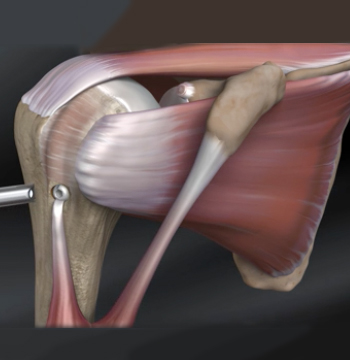The biceps tendon is a long cord-like structure that represents the uppermost extension of the long head of the biceps muscle. It rests in a groove at the top of the arm bone (humerus) and is situated between the subscapularis and supraspinatus tendons of the rotator cuff and ultimately attaches to a structure inside the shoulder called the labrum.
Biceps tendon disorders in the shoulder are primarily a function of aging as the tendon quality deteriorates and the tendon can begin to fail and eventually rupture. Biceps tendon ruptures typically are heralded by an audible or palpable pop and significant bruising in the upper arm. In most cases the biceps muscle belly will contract and appear prominent after the tendon has ruptured, referred to as a “Popeye muscle sign.” Although rupture of the biceps tendon can occur in a dramatic fashion with noise followed by deformity in the arm leading most patients to fear the worst, in almost all cases this is an injury that is very well tolerated and rarely requires treatment. Overall loss of strength and function in the upper arm is negligible even in high demand patients and pain is generally not an issue. The minimal impact biceps tendon ruptures create has led to much debate about its true purpose in the shoulder. Often the primary concern among patients is the cosmetic change in their arm.
The biceps tendon can also lead to problems when it slips out of its groove, often in conjunction with rotator cuff damage or when it becomes unstable at its attachment to the superior labrum. These injuries often will require surgery to correct.

